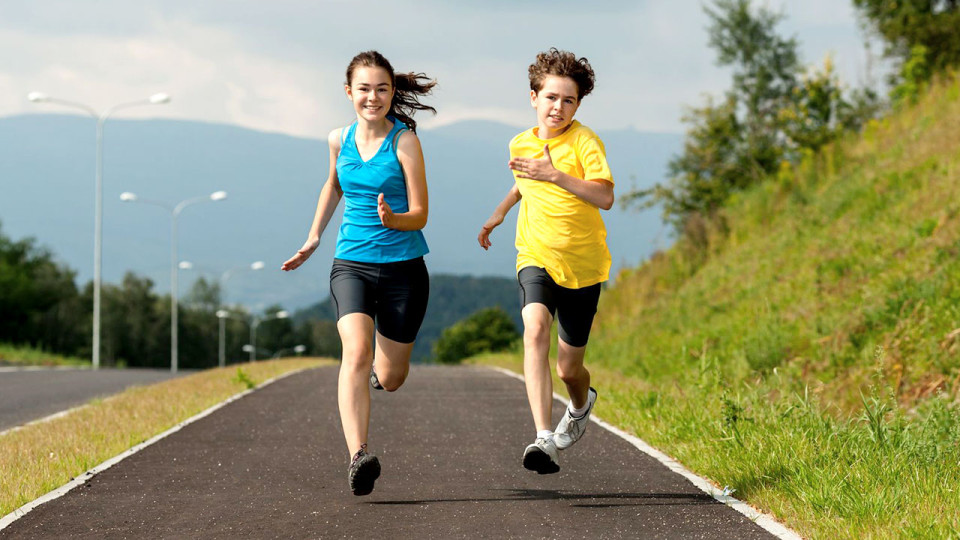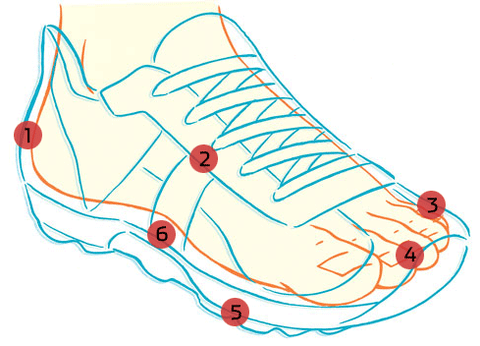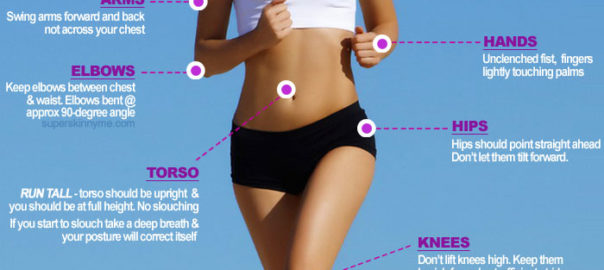11. Running turns you into the Energizer bunny
“Running is such a great cardiovascular workout that it makes it so that you don’t get tired as easily from any given workload,” Fitzgerald says. “For example, if I’m helping a friend move, I can carry boxes all day long and it’s not a big deal.”
12. Running strengthens your bones
Unlike every other aerobic workout you can crank out in the gym, running is high impact, meaning it loads and remakes your bones along with your muscles. “Swimming, cycling, and working on the elliptical don’t train your bones,” says Jason Fitzgerald, a USA Track & Field-certified coach and the founder of Strength Running. “If those are the only things you do, you’re at risk for weak bones and osteoporosis.”
13. Running helps you reach your goals
“Running makes you very goal-oriented. You’re always trying to achieve new PRs, and you know that you can’t just beat your goal in a day. It takes time, work, and consistency,” Fitzgerald says. That mindset, and practice working toward running goals, can pay off in helping you reach other career, financial, and personal goals.
14. Running makes you tenacious
“Running builds a tenacity and mental toughness that translates into every area of your life,” Fitzgerald says. If you can handle getting through 26.2 miles, you can handle anything.
15. Running fights off the common cold
“If you’re starting to feel sick, an easy 30-minute run can stimulate the immune system to help fight off a cold before it has a chance to take hold,” Fitzgerald says. In one British Journal of Sports Medicine Study, people who performed aerobic activity at least five days a week suffered from upper respiratory tract infections 43 percent less often than those who got in less aerobic activity. Plus, when runners did catch colds, their symptoms were much less severe.
16. Running’s perfect for any fitness level
You might not be able to just jump into Olympic weightlifting. But you can just wake up one morning and decide to go on your first run, Janet Hamilton, C.S.C.S., exercise physiologist with Running Strong in Atlanta. Plus, decades later, you still won’t have outgrown it. You can customize every running workout so that you never plateau.
17. Running’s social
“These days it seems that gyms are quieter than libraries,” Dubberly says. But on the trail, everyone’s chatting. Whether you run with one buddy, or join in a running club, the sport is all about community. And post-run happy hours.
18. Running’s meditative
More of a solo exerciser? That’s cool. “Running can be a time to zen out to your own thoughts,” ultrarunner Sarah Evans, C.P.T., a personal trainer and running coach in San Francisco.
19. Running is never the same
Contrary to what non-runners might think, every run is different, and it doesn’t have to be boring. You can mix it up so many ways, from running hills, going on tempo runs, performing intervals, or mixing it up between the road and the trail, Evans says.
20. You’re made to run
“Running is the best workout because it’s the most basic human form of exercise, using your own body, weight, and two legs to propel yourself forward,” Evans says. It’s as functional as workouts get.
21. Running boosts your mood
All runner’s highs aside, running can help your disposition all day long. For instance, a 2012 study out of Switzerland found that running for just 30 minutes every morning for three weeks significantly improved subject’s sleep quality as well as mood and concentration levels throughout the day.
22. Running is an excuse to eat carbs
And not just whole grain “healthy” carbs. We are talking refined pasta, white bread, and cookies. Simple, fast-acting carbohydrates are a runner’s best fuel, and upping your intake—strategically—can help you run better, and recover faster, per research published in the Journal of Applied Physiology. Some runners even eat Skittles on their long runs to stay energized, Hamilton says.
23. It strengthens your knees
No, running doesn’t wreck your knees. It does the exact opposite. Research from the Lawrence Berkeley National Laboratory shows that running (even marathoning!) decreases the risk of knee osteoarthritis. That may be because running increases the flow of nutrients to the cartilage in your knee while also strengthening the ligaments around the joint.
24. Running can make over your heart
“First and foremost, running is an aerobic sport,” Fitzgerald says. By training your body’s aerobic (oxygen-sucking) metabolism, it strengthens your heart while lowering your resting heart rate, blood pressure, and cholesterol. And guess what? Aerobic exercise is, by far, the most time-efficient form of exercise for improving your heart health, according to research published in The American Journal of Cardiology.
25. It keeps your eyes healthy
When most guys think about exercise benefits, they probably don’t think about their vision. But 2013 research published in Medicine & Science in Sports & Exercise shows that people who run an average of five miles or more a day have a 41 percent lower risk of developing cataracts, the leading cause of age-related vision loss and blindness. While the exact reason is yet to be known, it could have to do with the fact that running reduces the likelihood of developing high blood pressure or type 2 diabetes, both of which can contribute to cataracts.
Source: www.mensjournal.com








:max_bytes(150000):strip_icc():format(webp)/manandwomanrunningtogether-56a814423df78cf7729bef7a.jpg)


